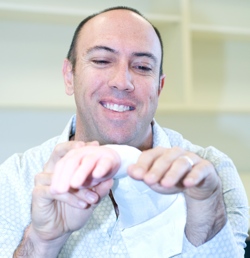This is my second post based on a perspectives piece David Butler and I wrote for the Journal of Pain. You can get the gist of it by just reading the bolded sentences.
It is some time now since John Loeser adapted Engel’s biopsychosocial model to fit it to the lived experience of chronic pain. From my perspective as someone who had experience on both sides of the chronic pain fence, it seemed to be focused on the impact of pain on the life of the sufferer. There is a bucketload of evidence to support that now – from Fordyce’s work on behavior therapy to Keefe’s on coping skills and Vlaeyen’s on fear avoidance – that one’s life is modulated by much more than the pain itself seems to me do be a done deal. This wide range of cognitive-behavioural therapies (CBT) share common theoretical assumptions about the interactions between environmental events, cognitions and behaviours. Not least among these is the idea that symptoms and behaviours can be cognitively mediated and can therefore be improved by modifying problematic thinking and inaccurate beliefs.
Perhaps a controversial point we raised in the article was this: that somewhere, between the establishment of the biopsychosocial model and the rapid rise of CBTs as the dominant non-pharmacological treatments for chronic pain, a shift occurred towards the idea that ‘pain is unavoidable – suffering is optional’. CBT aimed to manage pain, rather than to change it. The coverage of pain-biology related material in the CBT literature seemed to focus on this idea of ‘pain is now unavoidable so it is now time to learn how to cope with it. I found this situation quite confusing – ‘pain can be modified by our beliefs and behaviours’ seems inconsistent with ‘pain cannot be relieved by modifying beliefs and behaviours’.
I also think that this approach of ‘conceding that we can do nothing for pain’ seems inconsistent with what we now know about the underlying biological mechanisms of pain – that pain is fundamentally dependent on meaning. This understanding of pain, that it reflects an implicit evaluation of danger to body tissue and the need for protective behavior, was foreshadowed in the gate control theory[1], articulated more fully two decades ago[2], but is only recently gaining significant traction.
I wonder if this journey has suffered a hiccup recently with the widespread endorsement of ‘central sensitisation’ – a ‘disease within the CNS’ rendering pain relief impossible. I think this view contrasts with fundamental concepts of pain being something one feels and the inconsistent link between brain changes and clinical presentation[3].
Perhaps ironically, EP provides very strong justification for taking a CBT-based approach to rehabilitation and that is where my journey with EP began – to convince people that their pain was dependent on a potentially vast mix of inputs that suggest your body is in danger. In the last post on this I touched on my astonishment at realizing that half the people doing a full-on CBT programme spent the whole time thinking that they were the only one in the group who had real pain. In the article, David and I contend that the absence of strong biological justification for CBT might have contributed to it being no more effective for decreasing pain and disability in people with chronic pain than other active treatments are[4] (although, importantly, CBT programs on the whole do relieve pain[5]). It is deflating news that, in a recent Cochrane overview of multidisciplinary pain management programmes, the long-term effects of CBT for chronic pain came out somewhat underwhelming[6].
But is this really all that surprising? Why might someone in pain engage with treatment aimed at their thoughts, beliefs and behaviours, if they believe their pain is an accurate marker of tissue damage or of another disease process afflicting their spinal cord and brain? It seems to me that scientific evidence compels us to extend the idea of helping people live well with pain, to the possibility of helping them live well with less pain, or perhaps without any pain at all.
So, the theoretical underpinnings of EP are the experiments on animals and humans that clearly show pain to be modulated by a wide array of variables. EP is grounded in (i) the notion that pain is a conscious feeling that motivates protective behaviour, not a discrete biological event that occurs when tissue is truly in danger, (ii) the relationship between true danger and perceived danger is modulated by the sensitivity of our protective system, and (iii) understanding these things decreases perceived danger and therefore pain, and positions a biopsychosocial approach to rehabilitation as the best approach to rehabilitation.
About Lorimer Moseley
Professor Lorimer Moseley is a clinical scientist investigating pain in humans. After posts at The University of Oxford, UK, and the University of Sydney, Lorimer was appointed Foundation Professor of Clinical Neuroscience and Chair in Physiotherapy, The Sansom Institute for Health Research at the University of South Australia. He is also Senior Principal Research Fellow at NeuRA and an NHMRC Principal Research Fellow.
He has published 190 papers, four books and numerous book chapters. He has given over 120 keynote or invited presentations at interdisciplinary meetings in 26 countries and has provided professional education in pain sciences to over 9000 medical and health practitioners. He consults to governmental and industry bodies in Europe and North America on pain-related issues. He was awarded the inaugural Ulf Lindblom Award for the outstanding mid-career clinical scientist working in a pain-related field by the International Association for the Study of Pain, was runner-up for the Australian Science Minister’s Prize for Life Sciences, and won the 2013 Marshall & Warren Award from the NHMRC, for the Best Innovative and Potentially Transformative Project.
Link to Lorimer’s published research here. Downloadable PDFs here.
References
1. Melzack, R. and P. D. Wall (1965). “Pain mechanisms: a new theory.” Science 150: 971-9.
2. Wall, P. (1994). Introduction to the edition after this one. Editorial. TheTextbook of Pain. P. Wall and R. Melzack. Edinburgh, Churchill-Livingstone: 1-7.
3. Sullivan, M. D., A. Cahana, S. Derbyshire, et al. (2013). “What Does It Mean to Call Chronic Pain a Brain Disease?” The Journal of Pain 14: 317-22.
4. Williams, A. C., C. Eccleston and S. Morley (2012). “Psychological therapies for the management of chronic pain (excluding headache) in adults.” Cochrane Database Syst. Rev. 11: CD007407.
5. Morley, S. (2011). “Efficacy and effectiveness of cognitive behaviour therapy for chronic pain: Progress and some challenges.” Pain 152: S99-106.
6. Eccleston, C., A. C. Williams and S. Morley (2009). “Psychological therapies for the management of chronic pain (excluding headache) in adults.” Cochrane Database Syst. Rev.: CD007407.




